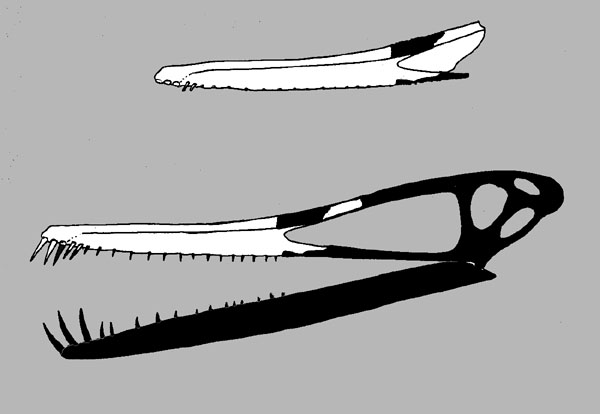
Genus: Cearadactylus non LEONARDI & BORGOMANERO, 1985
Species:? ligabuei DALLA VECCHIA, 1993 (as per CAMPOS & SPRAGUE, 2021)
Etymology: In honor of Dr. Giancarlo Ligabue, president of the Centro Studi
e Ricerche Ligabue, Venice, Italy.
= Anhanguera? ligabuei (DALLA VECCHIA,
1993) UNWIN, 2002
= Genus: Nova RODRIGUES & KELLNER, 2011
Holotype: Centro Studi e Ricerche Ligabue, CSRL 12692/12713
Locality: Unknown locality of the Chapada do Araripe, Ceara State, northeastern Brazil.
Horizon: Lower part of the Romualdo Member, Santana Formation, Araripe Group.
Biostratigraphy:
Age: Uppermost Aptian, Stage, Middle Gallic Subepoch, Early Cretaceous Epoch, Early Cretaceous.
Material: Anterior part of a skull with left jugal, part of the left lachrymal
and perhaps the left quadratojugal.
Note: Belongs to Ctenochasmatidae, UNWIN, 2002.
